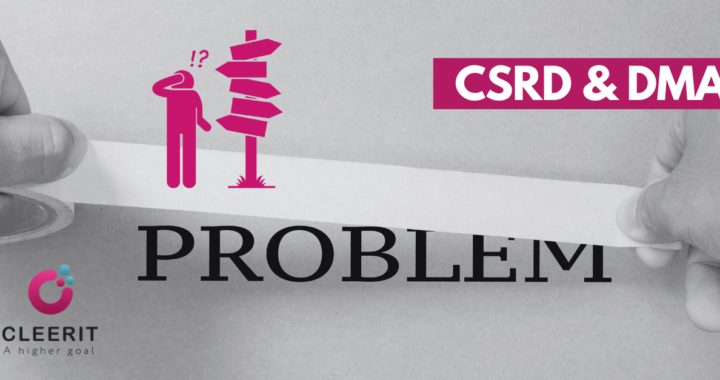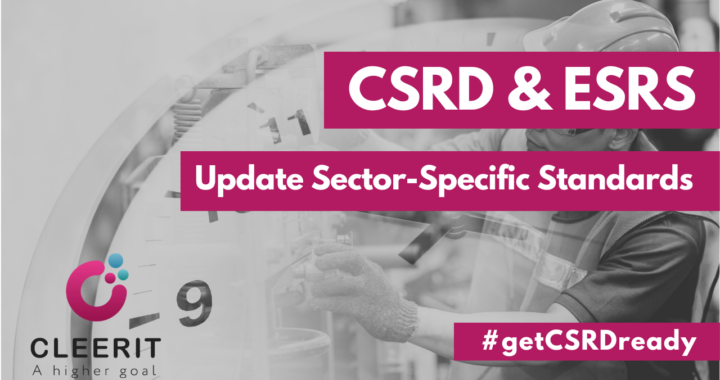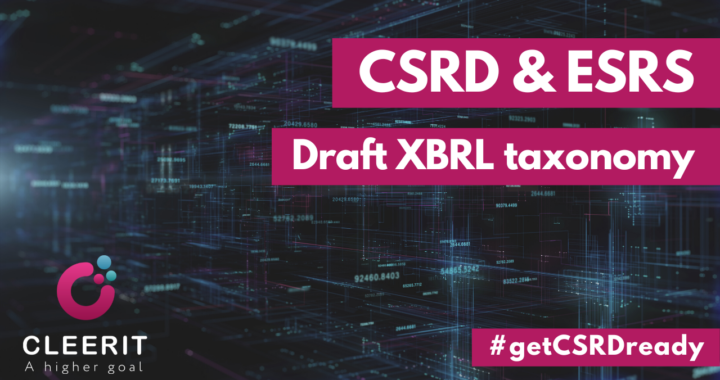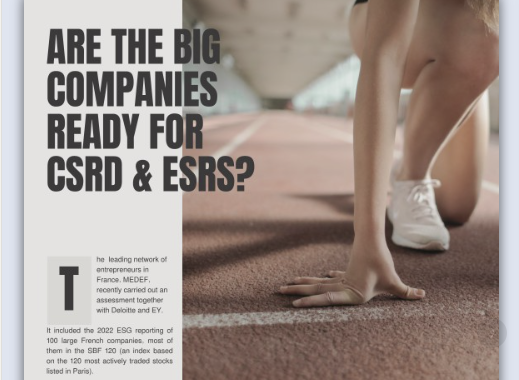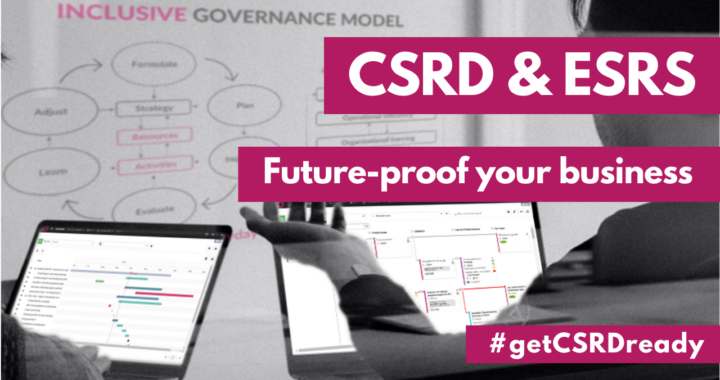ESRS, the European Sustainability Reporting Standards, mandatory for companies subject to CSRD, is where sustainability meets strategy and sets the stage for real transformation and profitable future-proof business.
ESRS strategy disclosure requirements, SBM, focus on how the company’s strategy and business model interact with, and addresses, its material sustainability impacts, risks and opportunities.
But – and this is important – it’s not only about mitigating adverse actual impact and risks, it’s also about pursuing new opportunities, as laid out in EU’s new growth strategy, the Green Deal.
So, what does ESRS say about opportunities?
ESRS lists 5 opportunity levers for you to consider: Resource efficiency, Markets, Financing, Reputation and Resilience – together with examples that we list in the below article.
ESRS is as much about strategy as it is about reporting, so it’s time to get CSRD-ready.
You can be certain that your competitors will seize this high Return-On-Investment opportunity. And technology makes it all easy and affordable.
Why wait?
ESRS is where sustainability meets strategy and sets the stage for real transformation and future-proof business
The European Sustainability Reporting Standards, ESRS, mandatory for companies subject to CSRD, specify the information that the company shall disclose to allow for readers to understand its material impacts on people and environment, and the material effects of sustainability matters on the company’s development, performance and position.
Future-proofing is the process of anticipating the future and developing methods of minimizing the effects of shocks and stresses of future events – on the company’s development, performance and position.
The ESRS strategy disclosure requirements, SBM, focus on how the company’s strategy and business model interact with, and addresses, its material sustainability impacts, risks and opportunities.
- The term “impacts” refers to positive and negative, actual or potential, sustainability-related impacts that are connected with the company’s business, as identified through an impact materiality assessment.
- The term “risks and opportunities” refers to the company’s sustainability-related financial risks and opportunities, including those deriving from dependencies on natural, human and social resources, as identified through a financial materiality assessment.
But, it’s not only about mitigating adverse impact and risks, it’s also about pursuing new opportunities, as laid out in EU’s new growth strategy the Green Deal.
What does ESRS say about opportunities?
To start with, when reporting on material opportunities, the reader should be able to understand if the opportunity is currently being pursued and is already incorporated in the company’s own general strategy, or if it is just general opportunity for the company or the sector it operates in. (ESRS-1.109)
ESRS also lists 5 opportunity levers the company can consider: Resource efficiency, Markets, Financing, Reputation and Resilience.
Resource efficiency, e.g.,
- Transition to more efficient services and less resource-intense processes.
- Decrease quantities of substances used or improve efficiency of production process to minimise impacts.
- Eco-design for longevity, repair, reuse, recycle, by- products, take-back systems, decoupling activity from extraction of materials, intensifying circular material use, creation of a system that allows for dematerialization (e.g., digitisation, improving utilisation rates, weight reduction).
- Practices to ensure products and materials are collected, sorted, and reused, repaired, refurbished, remanufactured.
Markets, e.g.,
- Development of less resource-intense products and services.
- Diversification of business activities.
- Demand for less resource-intense products and services, and new consumption models such as product-as- a-service, pay-per-use, sharing, leasing.
Financing, e.g.,
- Access to green funds, bonds or loans
Reputation, e.g.,
- Positive stakeholder relations and engagement as a result of a proactive stance on managing risks.
- Preferred partner status.
Resilience, e.g.,
- Diversification of resources and business activities (e.g., start a new business unit to recycle new materials)
- Investing in green infrastructures
- Adopting recycling and circularity mechanisms that reduce dependencies.
- Increase the capability to safeguard future stocks and flows of resources.
ESRS is as much about strategy as it is about reporting, so you will need CSRD-ready sustainability strategy & reporting digital support to succeed.
What better way to start than to see ESRS on your screen, fully digitized? Ready to navigate, learn, share and get ready.
The science-based SaaS solution Cleerit ESG helps you
- factor in risk exposure,
- identify and manage material topics,
- unlock the potential of your materiality assessments,
- cascade ambitious targets and
- create actionable roadmaps for strategic success –
- while preparing CSRD and
- automating your sustainability reporting with ESRS-ready templates.
And secure, modern SaaS technology makes it all easy and affordable.
You have rarely had such a high Return On Investment.
Why wait?

